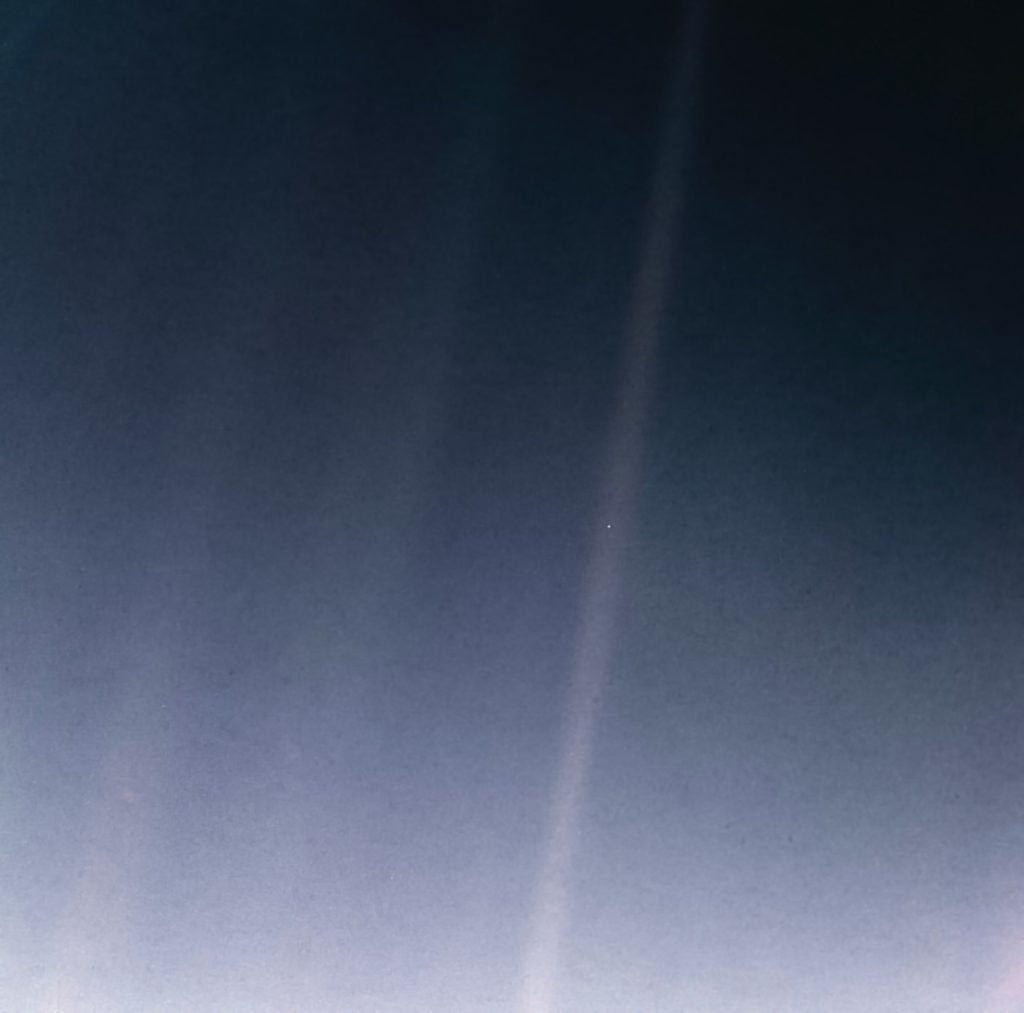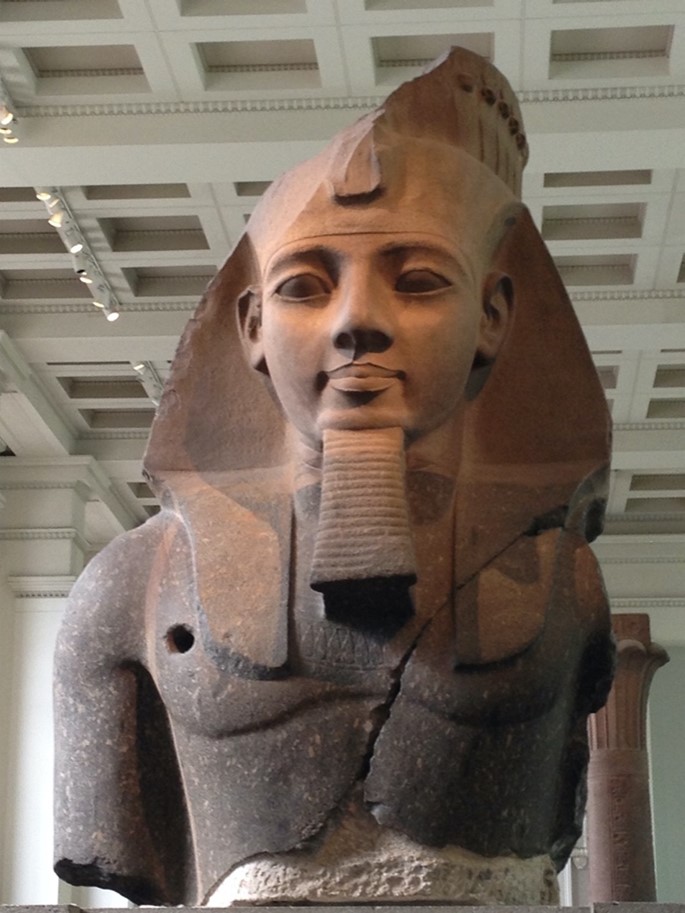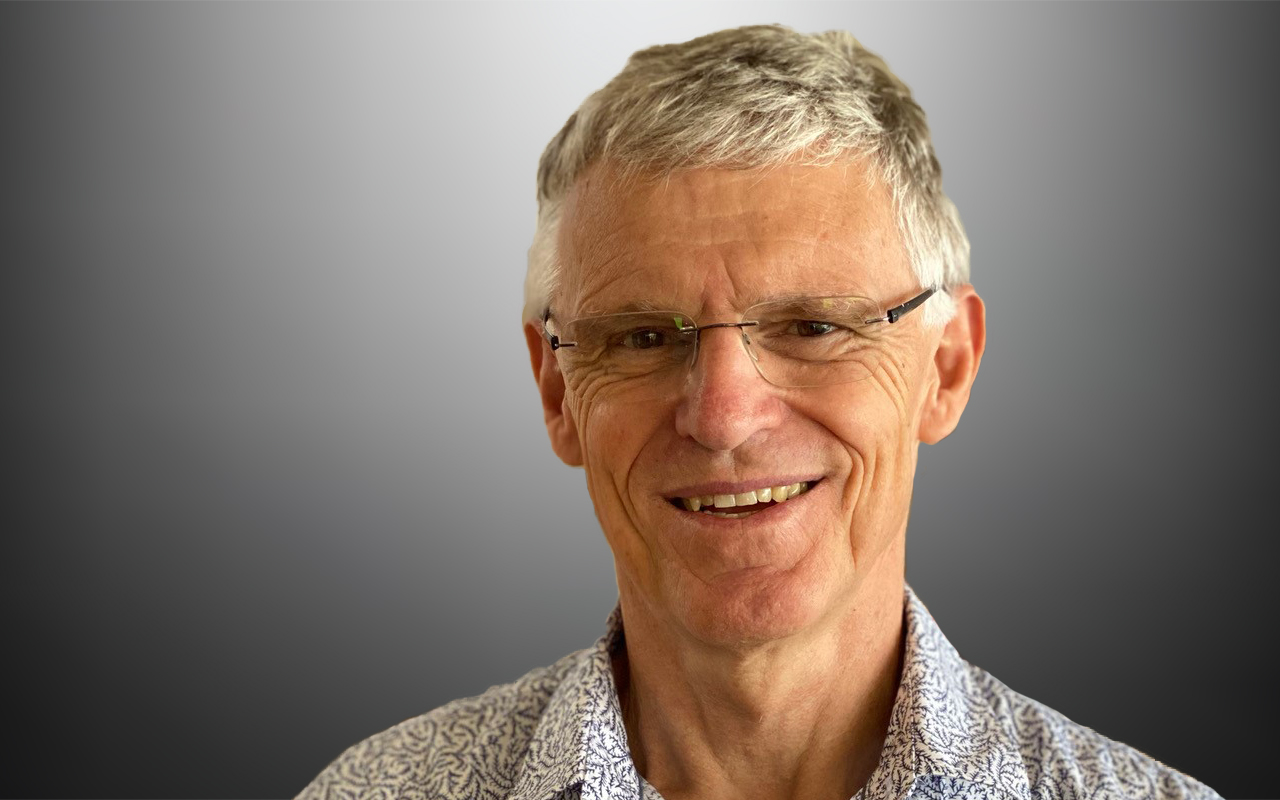SUMMER holidays are for pondering the past and preparing for the future.
At the end of every year, many of us reflect on the events of the previous year and sometimes hark back to simpler times. The past 14 months have given us a jolting reminder of our entanglement in the complexities of the ever-changing natural world, and as health workers, we may well be wondering what the future holds for our work and our communities. For me, this year has stirred the ghost of a Christmas past that helps me understand the present, and offers a guide to the future.
On Long Island, New York, where I lived as an adolescent and young adult, my family always spent Christmas Eve with our dearest friends, drinking eggnog and carol singing, sometimes having walked through the snow to get there. In 1968, we also gathered in front of the TV for the broadcast by the crew of Apollo 8 who were in orbit around the moon, the first humans to visit another celestial body. Within 6 months, I had knocked back an opportunity to go to Woodstock, and Neil Armstrong and Buzz Aldrin had landed on the moon.
While at the time both were clearly differently momentous events, in retrospect the visit to the moon did not really jolt my perception of life on Earth until I hung on my wall a poster of this iconic photo of the earthrise taken by one of the astronauts, Bill Anders.

Two years later, I used the photo as the catalyst for my final-year undergraduate seminar on the rapidly evolving understanding of our relationship with our planet.
I suppose now that, in my youthful naiveté, I had assumed that the visualisation of our home as a globe of fixed dimensions would inevitably trigger a paradigm shift in how we might live our lives: that as an intelligent species we would use the robust science that explains the workings of our world to secure our long term future on a finite surface.
Unfortunately, and in spite of our ideals, insufficient numbers of us have lifted our heads from the challenges of daily life to engage with our longer term global threats. Like many, I focused on living very much in the moment, and immersed myself in the smaller world of my community: I entered medical school, continued my travels across the globe, embarked on my medical career, started a family, and overcommitted to work.
Then, in 1990, Voyager 1 took the “Pale Blue Dot” photo of Earth from 6 billion kilometres away, outside the orbit of Neptune.

For many this photo has been an eye-opener, or a means to open the eyes of others. Carl Sagan, who had encouraged NASA to task Voyager 1 to take advantage of the photo opportunity, used the Pale Blue Dot photo to challenge us:
“From this distant vantage point, the Earth might not seem of any particular interest. But for us, it’s different. Consider again that dot. That’s here. That’s home. That’s us.
“On it everyone you love, everyone you know, everyone you ever heard of, every human being who ever was, lived out their lives.
“The aggregate of our joy and suffering, thousands of confident religions, ideologies, and economic doctrines, every hunter and forager, every hero and coward, every creator and destroyer of civilization, every king and peasant, every young couple in love, every mother and father, hopeful child, inventor and explorer, every teacher of morals, every corrupt politician, every ‘superstar,’ every ‘supreme leader,’ every saint and sinner in the history of our species lived there – on a mote of dust suspended in a sunbeam.
“The Earth is a very small stage in a vast cosmic arena. Think of the rivers of blood spilled by all those generals and emperors so that in glory and triumph they could become the momentary masters of a fraction of a dot. Think of the endless cruelties visited by the inhabitants of one corner of this pixel on the scarcely distinguishable inhabitants of some other corner.
“How frequent their misunderstandings, how eager they are to kill one another, how fervent their hatreds. Our posturings, our imagined self-importance, the delusion that we have some privileged position in the universe, are challenged by this point of pale light.”
Sagan C, Pale Blue Dot: a vision of the human future in space, Random House, 1994
While these photographs offer a perspective that was impossible until the 20th century, the drive to understand is not a modern phenomenon or the exclusive domain of humans. Innate natural curiosity, combined with caution, is essential to the pursuit of information that improves the survival of individuals of many species. The evolved capacity of humans for using knowledge to solve complex problems has made us particularly effective at protecting our individual security and promoting our reproductive success.
We are now so effective that our major threats come from our fellow humans, and much of our competition is now for profit from the lives of other people, and often at their expense.
However, new knowledge does not emerge into a terra nullius, it must compete for space in the existing cultures that define all communities. It may confront and threaten entrenched belief and economic systems, and the often not-unrelated personal self-interest of powerful individuals – think the gagging of Galileo and the corporate funding of the denial of climate science.
In spite of such obstacles, over a short few thousand years we have discovered that our Earth is not flat, is not the whole of the Universe, nor even at its centre, and is a small and dynamically unstable home for countless interconnected lives, most of whom depend on a relatively steady state for their existence.
It started as a trickle – the diameter of the Earth was probably first calculated (with an error of only about 2.0%) by the Greek polymath Eratosthenes (276–194 BCE) who, along with his contemporaries, Egyptians and Greeks, would have understood that a globe has a fixed surface area – and grew into a stream. Copernicus, Galileo, Newton, von Humboldt, Eunice Foote, Darwin and Wallace, Haeckel, Hubble, Einstein, Watson and Crick, and countless others have made compounding contributions to the sum of our knowledge. And since the beginning of the past century, the river has turned into torrent.
While the finer details of the first iteration of many groundbreaking insights, discoveries and conclusions of science are sometimes inaccurate, the inexorable processes of science eventually correct the errors. The core principles of the seminal works of Newton, Darwin and Einstein have not been superseded, but have been explained, confirmed and enhanced in terms of a complexity that could not have been known at the time they were first thought. The result is the accumulation of a vast reservoir of knowledge and understanding that is validated by repeated experience. This predictability underpins all of the technologies that we take for granted in so many of the mundane aspects of our daily lives.
The overwhelming array of evidence offers us an appreciation of the dynamic complexity, intrinsic instability and unpredictability of the ecosystems of Earth on which we depend, and growing evidence of their disruption by our behaviour.
Consideration of these issues also has a long history. Thomas Malthus (1766–1834) explored the dynamic relationship between population and resources in his seminal work An essay on the principle of population, in 1962 Rachel Carson (1907–1964) described the degradation of environments in Silent spring, Paul and Anne Erlich wrote the The population bomb (1968), and in 1971 the Club of Rome produced The limits to growth (and subsequently its sequel The limits to growth: the 30-year update). And while the details of some of their predictions may have been forestalled by human ingenuity, their core theses remain valid. The vast quantity of scientific research and observational data on our planet produced over the past 50 years only serves to re-enforce the quality of thought that inspired these early works.
Many find it obvious that, on a planet with a fixed surface area of ~507 072 000 km2, perpetual economic growth cannot remain the ultimate measure of success that it is for many economists and governments focused on a 3- or 4-year election horizon.
Or,
“If something can’t go on forever, it won’t.”
Herbert Stein (1916–1999)
Science (the same undisputed physics, chemistry, mathematics and biology that are the foundations of health care) tells us that we are already in the throes of an ecological and climatic upheaval. Our communal and individual survival is subject to the stability of the environment of the Earth. We can only live within a finite range of temperature and humidity, and are totally dependent on the reliability of a great diversity of interconnected ecosystems for a constant supply of food and clean water.
Data from the Hubble telescope indicates that there are some 2 trillion galaxies, each with perhaps 100 billion stars. Recent calculations suggest that in our galaxy alone there may be 300 million possible Earth-like planetary opportunities for life.
Whether or not life was seeded from elsewhere, life did arise at least once, and probably on Earth. True to our nature, as we have developed a broad understanding of the molecular mechanisms of life and become aware of our universe, we have turned to speculation about some form of life existing elsewhere in our universe. Given the numbers above, some believe that it is highly likely, if not certain, that life must have also arisen somewhere else at least once, if not on multiple occasions.
However, as the single event of life starting on Earth may have required a number of steps that are each dependent on the other steps having happened first, the probability of life having started anywhere in the universe could be vanishingly small (but not zero). Our very existence may cause us to be biased towards believing that it happened more than once, but has no influence on the probability that it did. The probability of progression from life to intelligent life is also unknown.
It is not implausible that our Earth, or perhaps our solar system, is the only place in the universe where life exists. Additionally, given the constraints of time, distance and the speed of light, it is quite likely that, even if life does exist somewhere else, even in our own galaxy, so far as we may ever know, we are on our own (here, here and here).
Another influence on the likelihood of communication with life elsewhere is the longevity of advanced civilisations that might reach out across the cosmos. Our track record here on Earth is not great. The evolved qualities that sustained our small groups over hundreds of thousands of years seem inadequate for the challenge of managing the large societies we create. Even the most robust of our complex communities have fallen apart after several hundred years for a combination of a variety of reasons including interpersonal conflict, gross inequality and hierarchical exploitation, natural disaster, and a tendency to derange the environments on which we may not realise we depend. Such instability would make a long, slow interstellar dialogue – perhaps thousands of generations per exchange – nigh on impossible.
While the books The collapse of complex societies (Tainter J, New Studies in Anthropology, Cambridge University Press, 1988), Collapse (Diamond J, Allen Lane, 2005) and Ubiquity: why catastrophes happen (Buchanan M, Three Rivers Press, 2000) offer a contemporary research-based understanding of the reasons for the failure of complex societies, consideration of the reality that societies do collapse is also not a modern phenomenon. Two hundred years ago, in 1818, the poet Percy Bysshe Shelley (1792–1822) wrote his sonnet Ozymandias to mark the acquisition by the British Museum of this statue of the Egyptian Pharaoh Ramses II.

I met a traveller from an antique land
Who said: Two vast and trunkless legs of stone
Stand in the desert. Near them, on the sand,
Half sunk, a shattered visage lies, whose frown,
And wrinkled lip, and sneer of cold command,
Tell that its sculptor well those passions read
Which yet survive, stamped on these lifeless things,
The hand that mocked them and the heart that fed:
And on the pedestal these words appear:
“My name is Ozymandias, king of kings:
Look on my works, ye Mighty, and despair!”
Nothing beside remains. Round the decay
Of that colossal wreck, boundless and bare
The lone and level sands stretch far away.
We like to think of ourselves as an intelligent species and we are very effective when applying our intelligence to the things that we have always done. Our behaviour and our brains are shaped by our genes and the cultures in which we are raised. Both evolved long before science provided evidence-based explanations for how we got here and are not easily shifted. Much of our intelligence is engaged in the pursuit of our personal interests, either individually, for family or for the community of our culture. We have never really demonstrated much willingness to make sacrifices in the interests of the global community.
However, we could choose to promote another of the key characteristics of intelligence, the ability to use what we learn about the world to anticipate future problems (one of the core strategies of medical practice). Doing so in the current context would fulfil a core biological imperative: to act in the long term interests of our descendants.
Without a rapid change in our behaviour, the cohesion of the hugely complex global social and economic networks, including health care, on which we have become progressively and totally dependent, will start to unravel and all aspects of what we like to believe are our autonomous lives will be massively disrupted.
So, with our science telling us that we are all at risk of our looming global catastrophe, this is my holiday puzzle for your consideration: as the most intelligent and self-aware form of life on what might be the only life-bearing planet in the entire universe, can we be wise enough to act in our own long term interests by overriding the evolved self-serving competitive behaviour embedded in our biology and our cultures, or are we so much driven by these qualities that have delivered us our successes that they will become the source of our downfall?
Carl Sagan further wrote of the Pale Blue Dot,
“There is perhaps no better demonstration of the folly of human conceits than this distant image of our tiny world. To me, it underscores our responsibility to deal more kindly with one another and to preserve and cherish the pale blue dot, the only home we’ve ever known.”
Dr Will Cairns is a palliative care specialist based in Townsville.
The statements or opinions expressed in this article reflect the views of the authors and do not represent the official policy of the AMA, the MJA or InSight+ unless so stated.

 more_vert
more_vert
Beautiful, brilliant, and poignant. Palliative care providers truly understand the fragility and ethereal nature of life. I wrote a piece about my experience as a young postgrad student in a fellowship. My one day with a Palliative care provider changed my perception of life and medicine in the US. Thank you for your thoughts and the love you have contributed to this pale blue dot.
Please replace Watson and Crick with Franklin and Wilkins and the many who contributed. Wilkins, working with Rosalind Franklin, took the X-ray picture, picture #51, of the DNA crystal. Thank you.
Fabulous article Will. I suspect that you are right that the human behavioural traits of aggressive self-interest that are generated by our hypothalamus & limbic system may predominate unless our more recently evolved cortex can inhibit them (https://www.ncbi.nlm.nih.gov/pmc/articles/PMC5935264/). This means the population control that is necessary to limit resource depletion may only ever be achieved by the intermittent effects of wars, famine and pandemics. A planned, intelligent, sustainable solution seems a long way off with the kind of leaders our civilisations raise. Though I would wish otherwise, sometimes it seems that the “planet B” solutions of those such as Elon Musk are actually more likely to succeed!